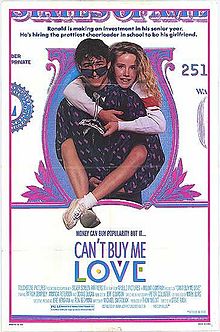
Over the Thanksgiving holiday, I took a nostalgic trip to the past -- junior high school. We reminisced over good times, bad times and awkward times. I had to say though, those years were not so horrible -- they were pretty much good times. True, I was that dweeby, nerdy Asian guy with the bad haircut, glasses, and out-of-fashion clothes. This was when being a nerd was the furthest thing from being cool. But, I didn't care. I was blissfully happy and ignorant of what others thought.
But, maybe this could all be attributed to a fortuitous happenstance.
The head cheerleader was one of my best friends. It wasn't exactly clear why, but she was. I had known her for a long time. She was the arbiter and director of all things and people cool and popular. From that one friendship, other friendships were made. I mingled effortlessly with the pantheon of the junior high school elite and was invited to the best parties. It was like an episode right out of the Wonder Years.
Which brings me to my point: Social Proof.
This friendship provided the Social Proof necessary for acceptance with all the cool kids. And, from there, I "spiraled up" to meeting other cool kids. Robert Cialdini, author of Influence: The Psychology of Persuasion, would be proud....Only if I had planned it this way.
Now, Influence is a great book -- a fun and easy read. It's one of those bookshelf-wonders like the Art of War by Sun Tzu and Marketing Management by Philip Kotler that every (aspiring) MBA or consultant should have read. Or at least have on the bookshelf. And, (not so) ironically, it's received social proof from the cool VC/start-up pundits -- McClure, Ries, Suster.
And, today, Social Proof seems to have popped back into the current tech world discussion:
Social Proof Is the New Marketing.
When Social Proof Goes Awry (actually titled, "When the Majority Is Wrong," by Larry Cheng)
and A Guide to Using Authority & Social Proof in Fund Raising (from a while back).
Of particular interest is Larry Cheng's article. I posit Social Proof is the flip-side of groupthink, colloquially referred to as the "Lemming Effect." Groupthink is where Social Proof fails. Particularly interesting is how Social Proof is manipulated ("gamed") for unearned authority. And, in our corner or the world, many carefully consider how to use Social Proof to get financing for one's start-up. From the entrepreneur's perspective, if you don't have the goods, how do you build social proof ("Fake It Till You Make It, in dotcom 1.0 parlance) in your bootstrap process? From the VC's perspective, can you tell when you've been "snowed" by "false" social proof?
 In short, can you really convince/manipulate the head cheerleader or captain of the football team to (pretend to) befriend you? Which brings me to my meta-point; Everything I learned about getting along with others, I learned in junior high school. And, maybe it all works out in the end.
In short, can you really convince/manipulate the head cheerleader or captain of the football team to (pretend to) befriend you? Which brings me to my meta-point; Everything I learned about getting along with others, I learned in junior high school. And, maybe it all works out in the end.
